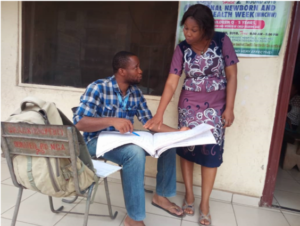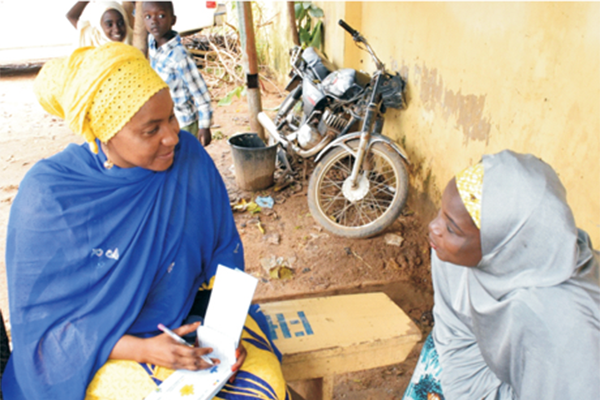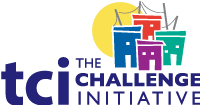Nigeria Toolkit: Monitoring, Evaluation & Learning
- Home
- Help and Support
- Close
- Toolkits
- Global Toolkit
- AYSRH Toolkit
- Hub Toolkits
- Core High-Impact Practices
- Gender Essentials Mini Course
- Close
- Resource Collection
- Community of Practice
- Coaching
- Log In/Register
- My Profile
- English
 Data Tools Needs Assessment
Data Tools Needs Assessment
What is it?
A needs assessment is a systematic process for determining and addressing needs, or “gaps”, between current conditions and desired conditions or “wants”. The discrepancy between the current condition and wanted condition must be measured to appropriately identify the need. The need can be a desire to improve current performance or to correct a deficiency. A plan of action is developed to address the needs and close the gaps to bring the organization closer to its desired future state. The steps for conducting a needs assessment are as followed: Exploration and identification, data gathering and analysis, utilization of data analyzed and evaluation.
In TCI-supported States, a data tools needs assessment was conducted to strengthen the reporting rates of the States for services provided in its health facilities.
The purpose of the data tools needs assessment is to:
- Assess the availability of FP tools in TCI-supported facilities. The tools to be assessed include:
- FP registers
- Monthly Summary forms
- Daily Consumption Records
- Requisition Issue and Request Forms
- Client Card
- Validate the knowledge gap of FP record staff on the use of FP tools in capturing data at the point of service.
- Provide evidence necessary to engage relevant authorities for decision use towards the improvement of FP indices in the State.
Why is it important?
- Validates claims that all facilities in the State have FP-related data collection tools.
- Helps to identify common errors (e.g., data outliers, data discrepancy, computational error, etc.) that might negatively influence data use for decision making and develop coaching plans to address these errors.
- Helps to prioritize the reallocation of tools across the various facilities as well as detects the action that will improve data capture and enhance data quality at the various facilities.
- Serves as an opportunity to further strengthen the quality of data for decision making by mentoring the provider and health information officers (HIOs) on use of data tools.
What are the steps for implementing this approach?
- Identify the various concerns and issues by defining the set goal as well as the objective (State M&E gap analysis)
- Identify the various facilities in which the needs assessment will be carried out using the appropriate selection criteria (e.g., high volume facilities)
- Define the sample population at the facility level (Service providers, Health information Officers and Medical Record Officers)
- Outline the formats of the assessment – focus group discussion, key in-depth interview, personal interview, etc.
- Develop or design the assessment tools (e.g., questionnaires or interview guide)
- Recruit and train the assessor – whenever possible, the RH supervisor and/or LGA M&E officers – on the assessment tools
- Assessors schedule visit to assess the facility
- Field work: Data gathering, entry and analysis as well as reporting
- Dissemination of findings
- Reallocation of available tools, request for printing more tools and providing ongoing mentoring and coaching
Tips
- Endeavor to inform the facilities early before scheduled visits are made to the facilities.
- Involving the RH Supervisor and LGA M&E officers will further strengthen the quality of the assessment as they know the local structure of the facilities.
- Work with the Planning, Research and Statistics Department of Ministry of Health, the Primary Health Care Management Board as well as the Hospital Management Board.
Challenges
- Data tools in some facilities are sometimes safeguarded by facility staff and, therefore, not readily accessible to the assessor to carry out the needs assessment and identify the gaps. It is, therefore, necessary to inform the facilities workers of the intention of the needs assessment through the Medical Officer of Health in the LGA before visits are made.
- The knowledge gap of providers on some of the data tools has been an issue.
What's the evidence that this approach strengthens family planning programming?
- 85% of facilities have FP registers, while only 15% of the facilities do not have FP registers.
- 90% of the facilities have Monthly Summary forms, Daily Consumption Records and Requisition Issue and Request Forms, while just a little above 92% of the facilities have Client Card.
- It is evident from the assessment that a majority of the 40 facilities across the 8 LGAs have data tools. However, it is a necessity for the Advocacy Working Group to advocate to the Ministry in Charge of tools printing and distribution to make data tools available in the facilities that have no tools.
Figure 1. Percentage distribution of data tools accessed in Rivers State

The findings of this needs assessment has helped Rivers State and other TCI-supported States to understand the gaps that they have across their facilities, leading to the provision of these important tools which will improve and strengthen the reporting system for family planning as well as other relevant health areas.
TCI APP USERS PLEASE NOTE
You will only receive CERTIFICATES by email – when earning a score above 80% – and will not be able to view or print a certificate PDF from the TCI app.
Test Your Knowledge
Earn a Certificate
Quiz Summary
0 of 5 Questions completed
Questions:
Information
You have already completed the quiz before. Hence you can not start it again.
Quiz is loading…
You must sign in or sign up to start the quiz.
You must first complete the following:
Results
Results
0 of 5 Questions answered correctly
Your time:
Time has elapsed
You have reached 0 of 0 point(s), (0)
Earned Point(s): 0 of 0, (0)
0 Essay(s) Pending (Possible Point(s): 0)
Categories
- Not categorized 0%
- 1
- 2
- 3
- 4
- 5
- Current
- Review
- Answered
- Correct
- Incorrect
-
Question 1 of 5
1. Question
It is necessary to inform the facilities before scheduled visits so the data tools can be made available to the assessor.
CorrectIncorrect -
Question 2 of 5
2. Question
A Data Tools Needs Assessment serves to:
CorrectIncorrect -
Question 3 of 5
3. Question
Examples of data tools include:
CorrectIncorrect -
Question 4 of 5
4. Question
How useful did you find the information and/or tools presented on this page? Please write your response in the box below using one of the following phrases: Very useful, Useful, Somewhat useful, Not useful.
Feel free to comment on why you made that choice.
-
This response will be awarded full points automatically, but it can be reviewed and adjusted after submission.
Grading can be reviewed and adjusted.Grading can be reviewed and adjusted. -
-
Question 5 of 5
5. Question
How do you intend to use the information reviewed and/or tools that you accessed?
-
This response will be awarded full points automatically, but it can be reviewed and adjusted after submission.
Grading can be reviewed and adjusted.Grading can be reviewed and adjusted. -






